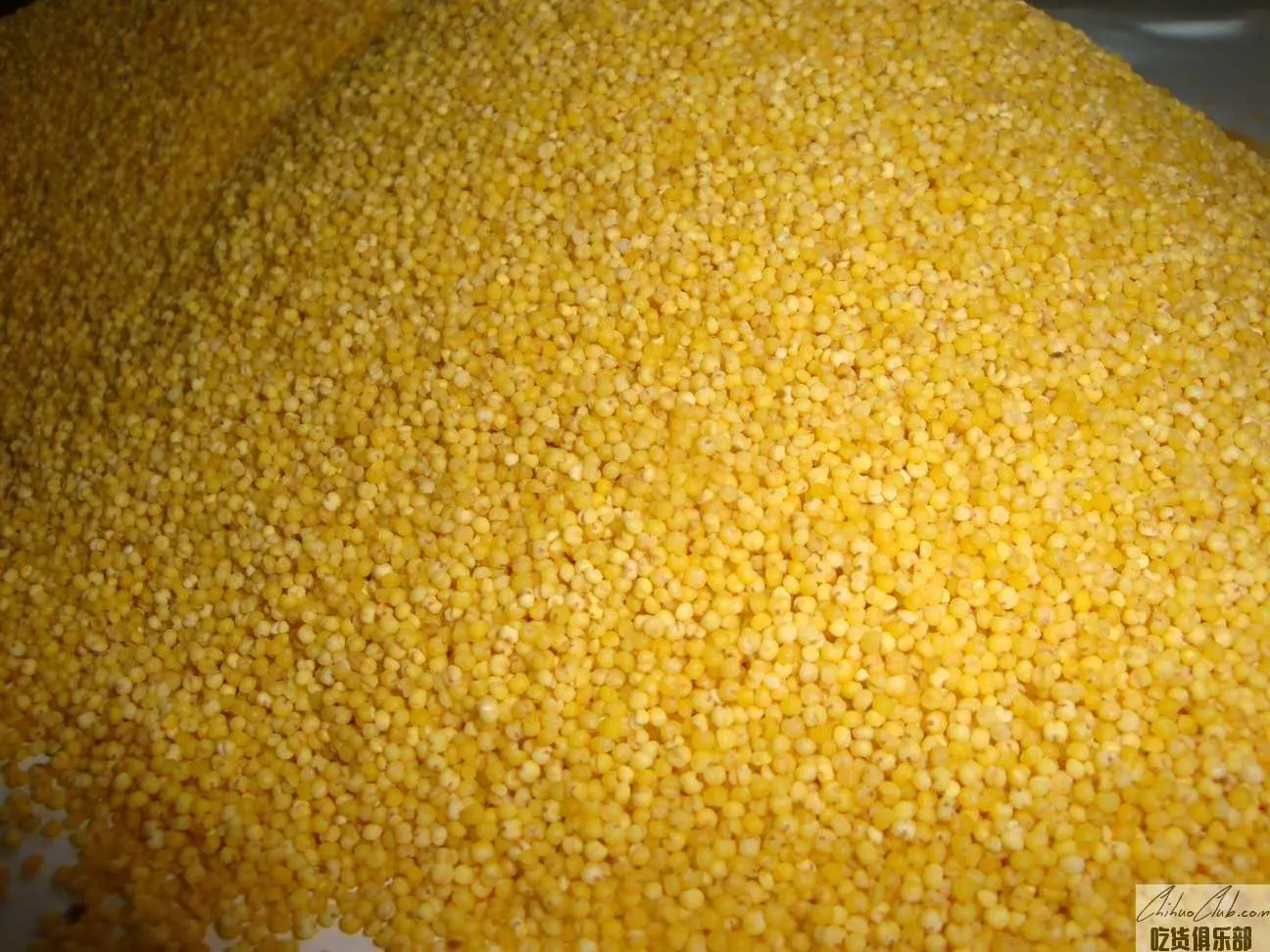
Wu'an millet
-
Update date::
-
Date of protection::
-
Protected range:The protection scope of Wu'an millet GI products is the administrative area under the jurisdiction of Wu'an City, Hebei Province.
-
Related origin:hebei handanshi wuanshi wuanshi-beianlexiang wuanshi-beianzhuangxiang wuanshi-boyanzhen wuanshi-cishanzhen wuanshi-datongzhen wuanshi-guantaoxiang wuanshi-hebeiwuangongyeyuanqu wuanshi-hejinzhen wuanshi-huoshuixiang wuanshi-kangerchengzhen wuanshi-kuangshanzhen wuanshi-majiazhuangxiang wuanshi-paihuaizhen wuanshi-shangtuanchengxiang wuanshi-shidongxiang wuanshi-shucunzhen wuanshi-wuanzhen wuanshi-wujizhen wuanshi-xisizhuangxiang wuanshi-xitushanxiang wuanshi-yangyizhen wuanshi-yetaozhen wuanshi-yichengzhen
-
Category:
Wu'an is a "pear of pearls" embedded in the junction of the four provinces of Shanxi, Shandong and Henan. Wu'an is the hometown of Chinese millet. Wu'an Magnetic Mountain is the birthplace of millet, the hometown of Millet, with a planting history of more than 7,300 years. The magnetic mountain is high in green and clear water, and the temperature difference between day and night is large. The millet is made of finely processed raw materials, which is purely natural and pollution-free. The Wu'an millet made here is slightly yellow in color, small in size, easy to rotten in the paste pot, sweet and musky in the mouth, and rich in vitamins, which can warm the stomach and nourish the muscles, relieve the thirst, relieve the thirst, supplement the qi, and eat it all the year round. Longevity.
Wu'an millet, special product in Wu'an City, Handan City, Hebei Province. Wu'an is the hometown of Chinese millet. Wu'an millet is produced in the production base of pollution-free agricultural products recognized by the state. Here, the mountains and trees are green and clear, and the temperature difference between day and night is large, and it is purely natural and pollution-free. Wu'an millet is processed from Wu'an millet as raw material without adding any additives. Wu'an millet is yellowish in color, small in size, easy to rotten in the paste pot, and the sweet and fragrant entrance is rich in nutrients and is very popular among consumers. Wu'an is the birthplace of millet, the hometown of Millet, with a planting history of more than 7,300 years. Wu'an millet has excellent quality and good market reputation. It is favored by consumers and has the reputation of “Hometown of China Xiaomi”. Wu'an Xiaomi is the hero of the liberation of New China. The Eighth Route Army won the great victory of the War of Resistance Against Japanese Aggression and the War of Liberation with the use of millet and rifle. At the beginning of the 21st century, relevant departments of Wu'an City helped farmers to promote the use of high-quality special millet varieties, organic green pollution-free cultivation techniques, standardized production, and listed the millet industry as one of the top 10 industries in the 11th Five-Year National Economic Development Plan. Nutritional value Wu'an millet has a very high nutritional value, protein content of about 9.2-14.3%, higher than rice and corn, crude fat content 3.0-4.6% slightly lower than flour, ten times more than rice, complete amino acid species, especially for human body needs The content of tryptophan and methionine is very high. Each kilogram of millet contains 192 mg of tryptophan and 297 mg of methionine, and is rich in vitamins. It can warm the stomach and nourish the muscles, relieve the thirst and quench your thirst. Perennial consumption can prolong life. After the local women have children, they will eat millet porridge and eggs to milk and nourish the body.
Wu'an millet quality technical requirements (a) varieties. "Shibuya 19" (formerly known as "Yuyou 2"), "Shibuya 25" (formerly known as "Lazy Valley No. 1"), "Shibuya 31" (formerly known as "Lazy Valley No. 3"). (2) Site conditions. The altitude of the protected area is greater than or equal to 150 meters, the soil type is cinnamon soil, the soil texture is light soil, the pH value is 7 to 8, and the soil organic matter is above 1.0%. (3) Cultivation management. 1. Sowing: (1) Preparation before sowing: Apply 2500 kg to 3000 kg of high-quality organic fertilizer per 667 m2 (mu), deep ploughing 20 cm or more, and finely level. (2) Sowing time: May 20 to June 20. (3) Seedling density: The seedling density per 667m2 (mu) is less than or equal to 50,000. 2. Growth period management: seedling stage combination, fixed seedling and cultivating; jointing and booting stage combined with cultivating soil and watering, top dressing. No top dressing is allowed within 30 days before harvest. After the jointing, the cultivating and cultivating soil should be carried out before the sealing. It is not suitable for deep cultivating when it is dry. 3. Harvesting and storage: When 80% of the grain of the grain is ripe, it is harvested. Different varieties should be single, single, and single. 4. Environmental and safety requirements: The use of pesticides, fertilizers, etc. must comply with relevant national regulations and must not pollute the environment. (4) Processing. Millet processing millet should meet the relevant national standards for processing accuracy, broken grain, broken rice, moisture and other quality requirements. The whole process can not destroy the nutrients of millet, and food additives should not be used. (5) Storage. The moisture stored in Xiaomi's safe storage should be controlled below 12%, and it should be stored at room temperature and sealed for 12 months. (6) Quality characteristics. 1. Sensory features: small and full, bright yellow color, fragrant smell, soft and smooth. 2. Physical and chemical indicators: water (%) ≤ 10, protein (%) ≥ 8, crude fat (%) ≥ 2.8, gel consistency (%) ≥ 100, amylose (%) 12.0 to 18.0. 3. Safety requirements: Product safety indicators must meet the relevant regulations of the state for similar products.
Apply to:
The producers within the protection scope of Wu'an millet GI products may submit an application to the Quality and Technical Supervision Bureau of Wu'an City, Hebei Province for the use of the \"Special Mark for Geographical Indication Products\", which is approved by the Hebei Provincial Bureau of Quality and Technical Supervision and approved by the General Administration of Quality Supervision, Inspection and Quarantine. . The legal inspection agency of Wu'an Xiaomi is designated by the Hebei Provincial Bureau of Quality and Technical Supervision.